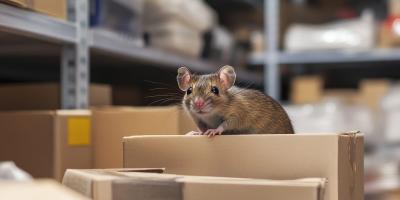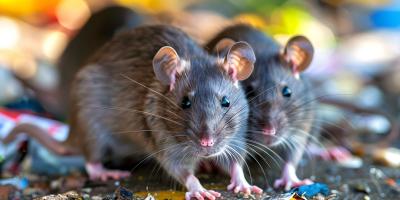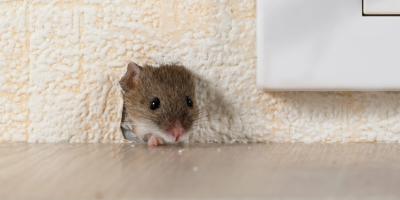Top 5 Hospital Pests You Should Have No ‘Patients’ For

Most people think of hospitals as clean, sterile environments, and for the most part that’s true. But even though a hospital may look clean on the surface, there may be more than just a kid with a sprained ankle on the other side of your emergency room wall.
Although everyone at a hospital works tirelessly to keep the building safe and clean, any structure within which food is served will attract a host of visitors who pay no attention to visiting hours. Despite the staff’s best efforts, creepy crawlies still sneak past security and skip past doctors to admit themselves.
However, if pests are detected, staff shouldn’t be tempted to run to the corner store for a can of Raid—only a pest control professional has the expertise to get invasive pests discharged as quickly and efficiently as possible, while abiding by all applicable state and local laws and safety codes.
Diagnosis: Infestation
There are five primary culprits when an infestation has been diagnosed in your hospital: cockroaches, ants, flies, bed bugs, and rodents. Figuring out which one you have requires looking at the visible symptoms. Only then can a pest control professional choose the right treatment and cure the problem.
Cockroaches
Cockroaches pose a serious threat to patients, visitors, and hospital staff. What’s worse, the hospital itself may not even be the source of the infestation. In departments with a lot of patient and visitor traffic, such as the emergency room, cockroaches can hitchhike their way into the hospital in the belongings or medical implements of the people passing through.
Ants
In recent years, a particular species of ant has become a significant problem for hospitals and other health care facilities: pharaoh ants. Smaller than typical ants, with a reddish brown tint to their abdomen, pharaoh ants are particularly destructive in part due to their small stature.
Their colonies can fit in incredibly small spaces, making detection an almost impossible task. Not only that, rather than centralizing in just a few large colonies, pharaoh ants distribute their nests in large numbers, which makes fighting them a significant task.
Flies
It may just be a minor annoyance to swat away fruit flies while savoring some apple slices in the cafeteria, but flies can be a serious problem for hospitals, especially when they venture into restricted areas. Just last year a hospital in Los Angeles was forced to shut down its operating rooms and postpone a slew of surgeries after flies invaded the antiseptic spaces. Not only do flies carry bacteria that can easily infect patients, they are also capable of laying eggs in patients’ open wounds.
Bedbugs
Finally, there’s the pest everyone would prefer not to think about—bedbugs. Bedbugs shouldn’t be a problem if the hospital is following strict bed changing and laundry practices. However, in recent years, calls to pest control companies for help combating bed bug problems in hospitals have risen dramatically. Usually, reviewing the hospital’s sanitation procedures should clear up an infestation, but if more drastic interventions are needed, a pest control professional is in order.
Rats
Rats and mice do more damage than any of the other pests you’ll typically find in a hospital environment. Not only will they annihilate any trash not disposed of properly, they’ll sneak into crawl spaces and walls and shred electrical wires of their insulation, creating a fire hazard and the potential for equipment failure.
Rodents are responsible for over 35 diseases that can affect humans. They bring in the threat of exactly what the hospital is trying to get rid of: illness.
A special note on rats: Rats are the largest, most damage-inflicting and dangerous pests that hospitals have to deal with. Their path of destruction can be as small as scarfing up scraps of food that have fallen near outdoor dumpsters, but can get as bad as feeding on human remains, as well as attacking living people within the hospital. Rats represent a serious problem that needs to be dealt with immediately by a professional. If you see a rat in your hospital, call a pest control service as soon as possible, before the rats destroy more than they probably already have.
Leave Surgery to the Surgeons, and Pest Control to the Professionals
You wouldn’t take out your own appendix, right? When it comes to medical services, it’s critical to rely only on the experts. If there’s a pest problem in your hospital, whether it’s flies near the fruit bowl in the nurse’s lounge or a full-blown rodent infestation in the ER; only licensed, certified pest control professionals can discharge the problem in a way that is guaranteed to be safe and legal, using the most modern and effective methods in the industry.
For more information and to schedule a free consultation, please visit our healthcare page.



